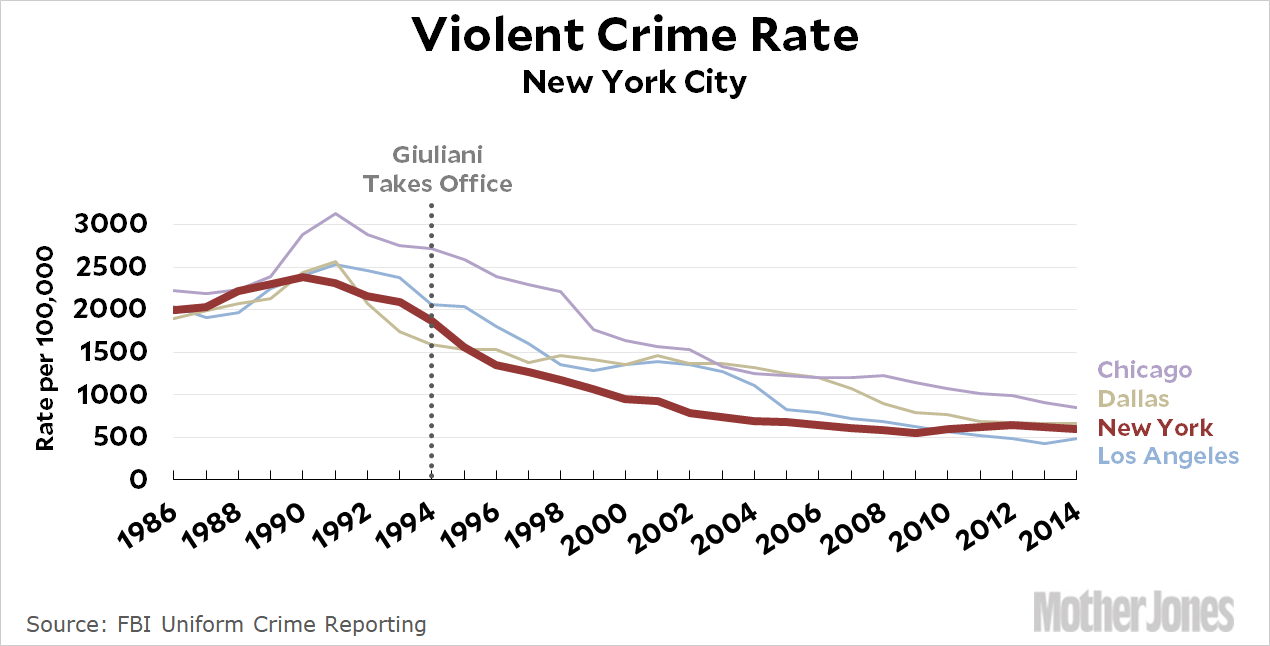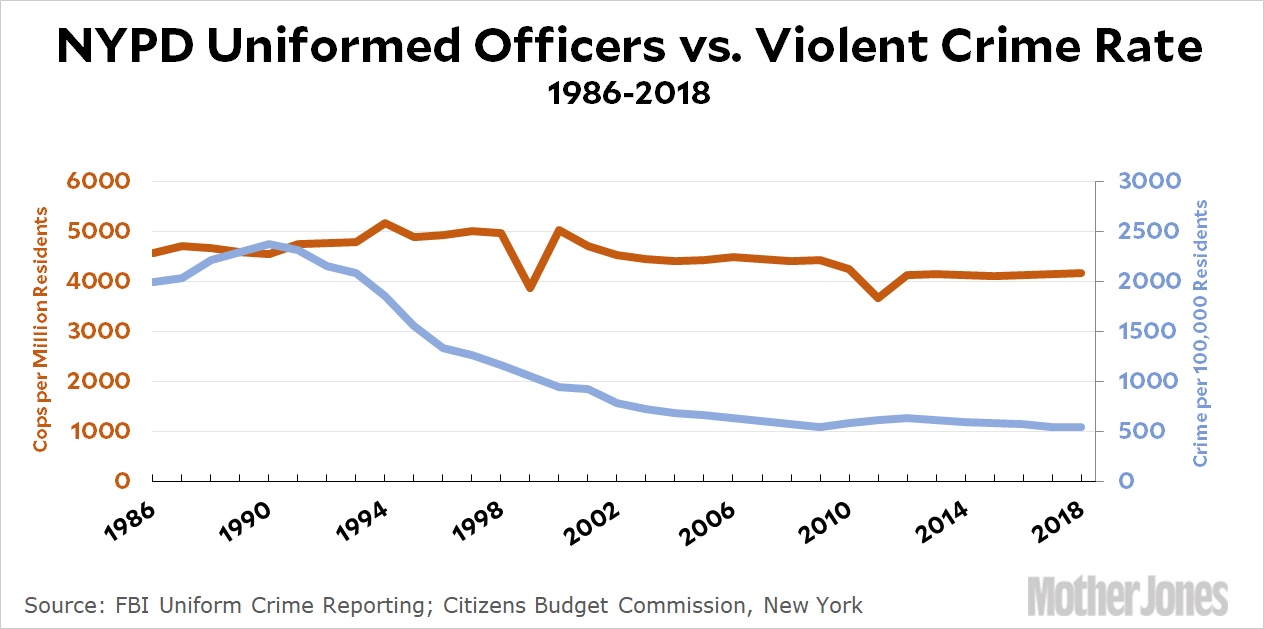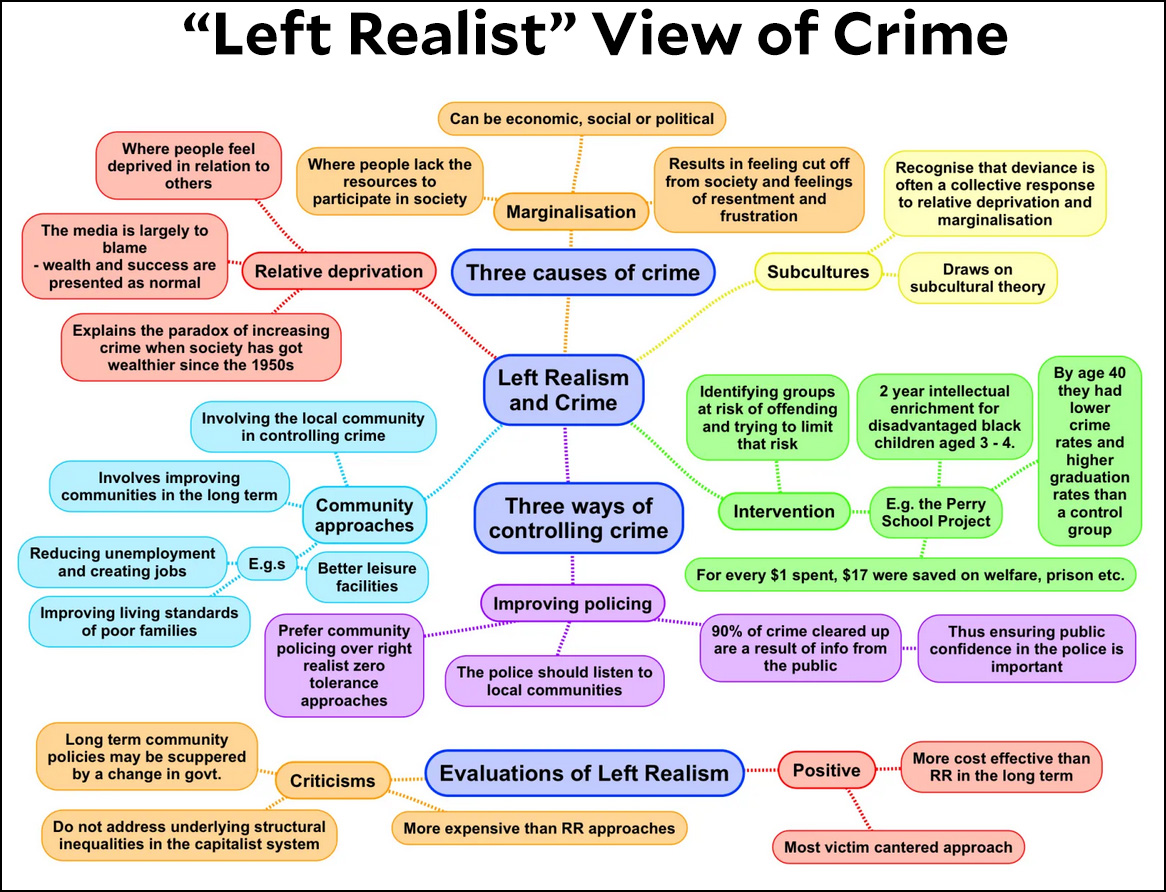A small fight conversation broke out in my Twitter feed yesterday related to my post about number of cops vs. violent crime rates. For example, in New York City violent crime has declined by nearly 80 percent from its peak in 1990:

Crime had declined by a full third before Rudy Giuliani became mayor. It declined before anyone whispered the words “broken windows.” It declined before Bill Bratton introduced CompStat. It began its decline during a recession; kept declining during the Clinton boom; continued without a hitch during the 2000 recession; and then kept declining during both the Bush recovery and the Great Recession. It’s obvious that both economic conditions and new theories of policing had little to do with it. Was it because New York just put more cops on the street?
Here’s a more detailed look at New York City:

The per capita number of police officers increased by about 10 percent through 2000 and then declined by about 20 percent through 2018. That’s nearly flat over the entire period. Violent crime, by contrast, plummeted 60 percent from its peak in 1990 through 2000 and then declined another 40 percent through 2018. That’s a total decrease of nearly 80 percent between 1990 and 2018.
So this provokes a big question: Why did crime go down so much? One possibility is that it’s because New York kept its number of police officers high and trained them better with tools like CompStat and community policing. Or maybe it was aggressive use of stop-and-frisk? If those are the answers, then you want to stick with a policy that’s working.
But if crime went down because the blood lead levels in kids went down, it means that teenagers today are inherently less violent than they were 30 years ago. If you ease up on the number of cops and the stop-and-frisk and so forth, crime will remain low because kids these days simply nicer and more self-controlled than they used to be.
As it happens, the evidence is massively on the side of lead emissions from automobiles being the big driver of the crime decline in New York City and elsewhere. I wrote an article in 2013 about this, which you can read here. But I’d recommend that instead you read a 2018 update that includes a summary of the original article plus descriptions of all the research that’s been carried on since then. When you read it all, the evidence is so overwhelming that I now consider the lead-crime hypothesis all but proven.
It still hasn’t caught on, of course. The problem is that among criminologists, there’s an aversion to “essentialist” theories—that is, theories that depend on essential characteristics like IQ or race. This is a little odd since crime is well known to depend on age and gender, which are about as essentialist as you can get. But no one wants to get anywhere near IQ and race, so essentialism is taboo.
The second problem is among activists on both left and right who have their own pet theories. On the left, we tend to blame poverty, institutional racism, poor schooling, lousy housing, and so forth. On the right, the favorite targets are the breakdown of the family, too few cops, too few prisons, drugs, the decline of religion, and so forth. There is very little convincing evidence for any of this, while lead poisoning explains everything. But if lead poisoning is the answer, then everyone has to give up their pet theories about what happened between 1960 and 2010. That’s a tough ask.

Seven years ago, when Bill de Blasio became mayor of New York City, everyone was worried that he would screw up the highly successful crime programs of his predecessors. I scoffed at that: “Unless Bill de Blasio starts up a city program to seed the clouds with lead dust, he doesn’t really have anything to screw up.” And I was right. He got rid of stop-and-frisk and kept police headcount pretty much flat. And it didn’t matter: crime went down anyway.
I’m willing to bet that a certain amount of downsizing could be done around the country. Every city will push back because they have special needs: LA has always had a fairly small police force, for example, and New York is a racial powder keg that could blow at any time. I recommend ignoring all this special pleading and just looking at the numbers. If there’s been a big crime decline since 1990, the reason is lead. And the good news is that the effects of lead are permanent. Once you have a whole cohort of teenagers that’s grown up lead-free, they’re just not very prone to committing violent crimes.
This is where we are now, and it’s the reason we can experiment with reducing funding for cops and reallocating it elsewhere to see what makes a difference. These reallocations should be rigorously studied to see what works and what doesn’t, because data is power. It’s data that told us lead was responsible for the big crime drop of the past 30 years, and it’s data that has a chance of telling what more we can do going forward.

















